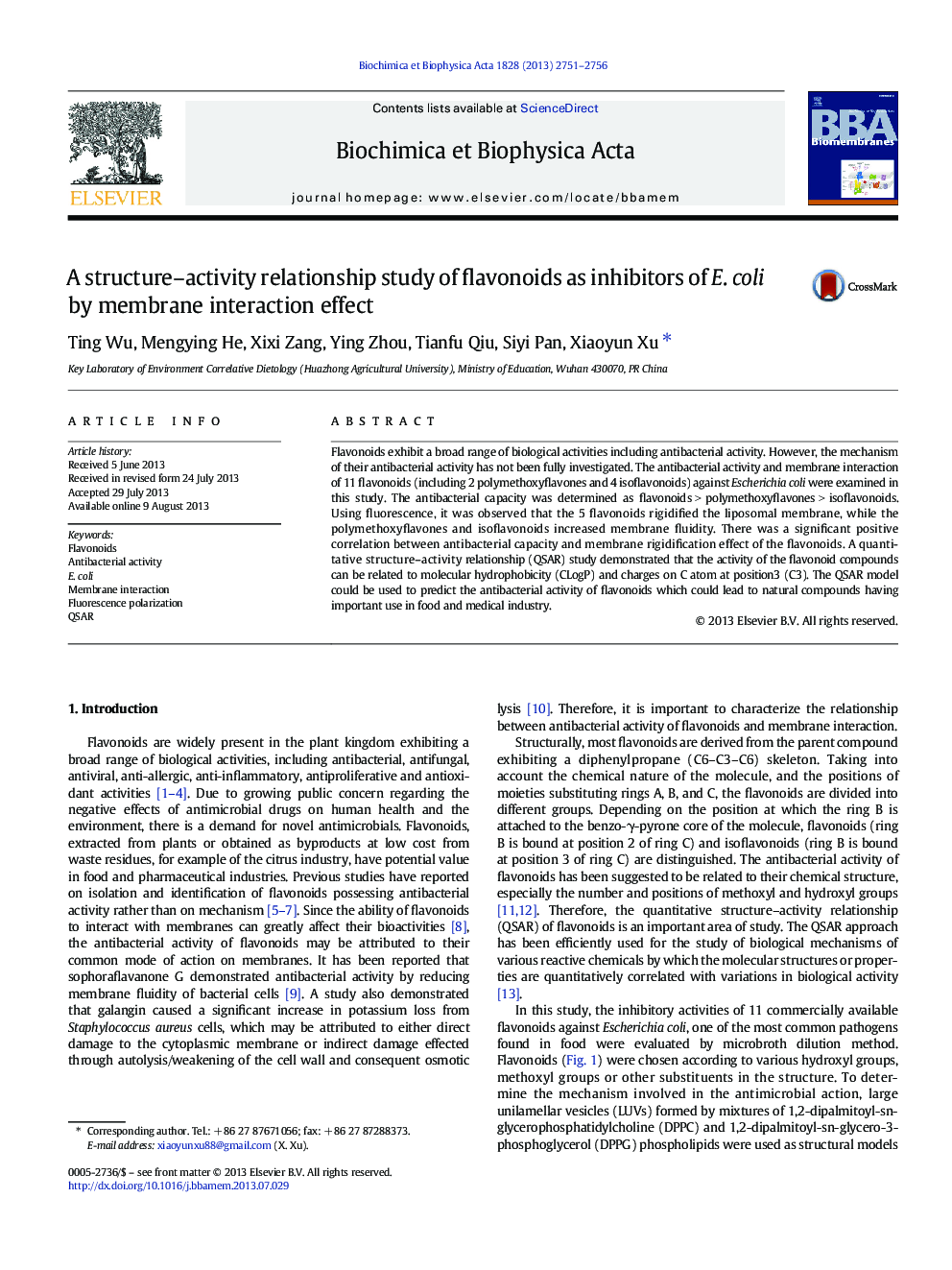| Article ID | Journal | Published Year | Pages | File Type |
|---|---|---|---|---|
| 1944320 | Biochimica et Biophysica Acta (BBA) - Biomembranes | 2013 | 6 Pages |
•The inhibitory activities of flavonoids against Escherichia coli were evaluated by microbroth dilution method.•Influence on the model membrane fluidity of flavonoids was assessed by means of DPH fluorescence polarization measurements.•There was a significant positive correlation between antibacterial capacity and embrane rigidification effect of the flavonoids.•A quantitative structure-activity relationship (QSAR) study was performed.•Higher values for CLogP and high positive charges on C3 lead to an increasing of antibacterial activity.
Flavonoids exhibit a broad range of biological activities including antibacterial activity. However, the mechanism of their antibacterial activity has not been fully investigated. The antibacterial activity and membrane interaction of 11 flavonoids (including 2 polymethoxyflavones and 4 isoflavonoids) against Escherichia coli were examined in this study. The antibacterial capacity was determined as flavonoids > polymethoxyflavones > isoflavonoids. Using fluorescence, it was observed that the 5 flavonoids rigidified the liposomal membrane, while the polymethoxyflavones and isoflavonoids increased membrane fluidity. There was a significant positive correlation between antibacterial capacity and membrane rigidification effect of the flavonoids. A quantitative structure–activity relationship (QSAR) study demonstrated that the activity of the flavonoid compounds can be related to molecular hydrophobicity (CLogP) and charges on C atom at position3 (C3). The QSAR model could be used to predict the antibacterial activity of flavonoids which could lead to natural compounds having important use in food and medical industry.
Graphical abstractFigure optionsDownload full-size imageDownload high-quality image (72 K)Download as PowerPoint slide
